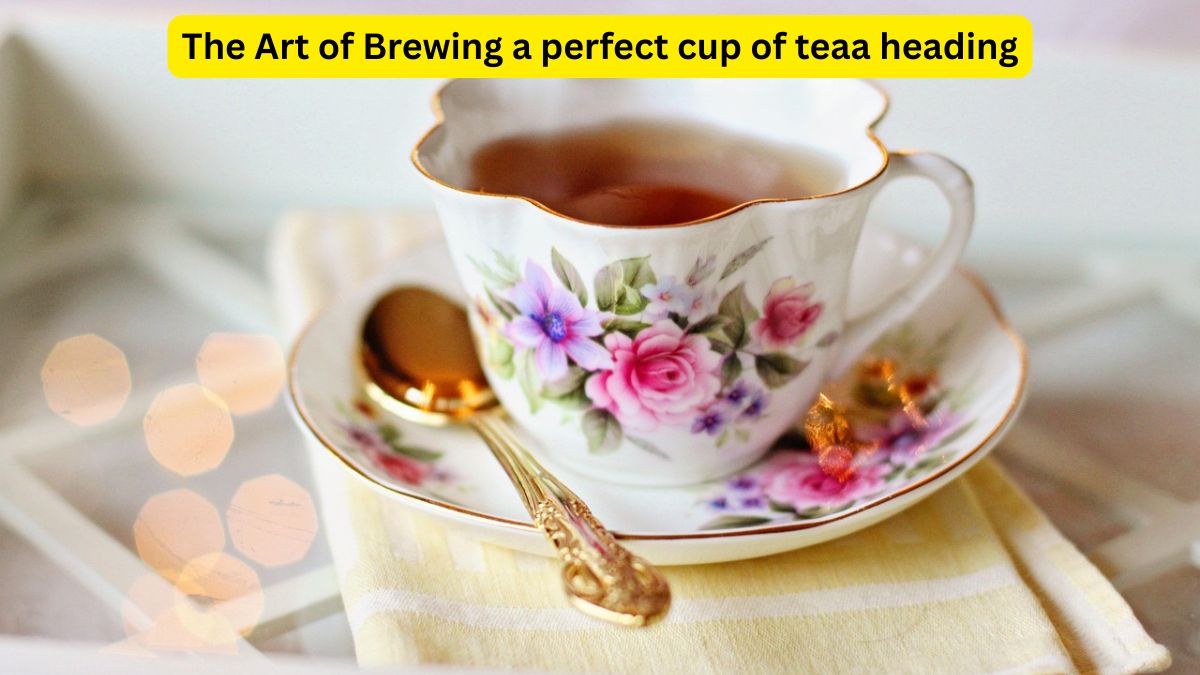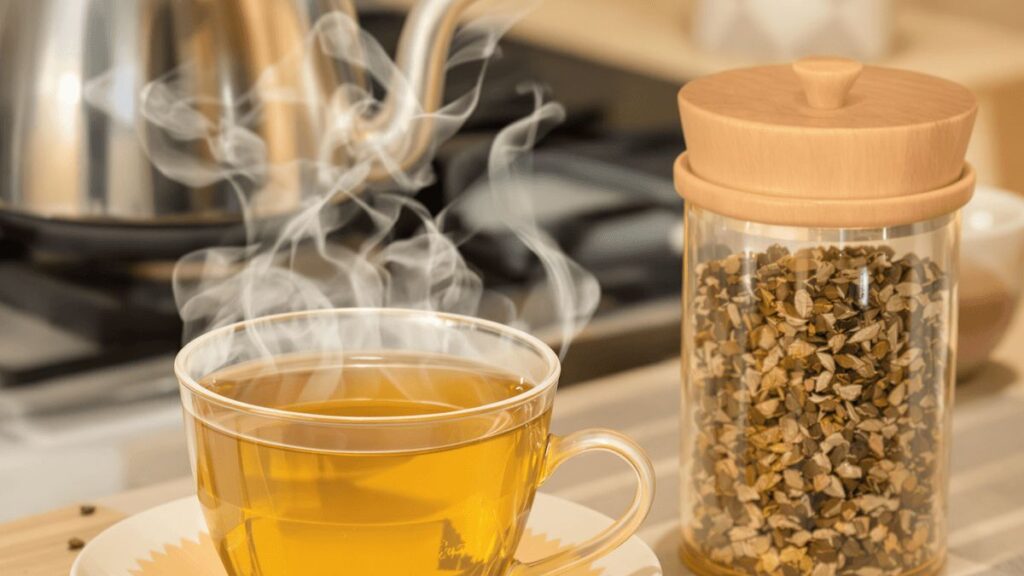The Art of Brewing a Perfect Cup of Tea
Creating a perfect cup of tea isn’t just about adding boiling water to tea leaves — it’s a mindful ritual, passed down through time and tradition. Every variety of tea, from the gentle fragrance of green tea to the bold strength of English breakfast, carries its own story. The aroma, flavor, and brewing technique all come together to reveal the character of each unique blend
Tea brewing is an art of precision and creativity. By choosing good quality ingredients carefully, manipulating the water temperature, and timing the steeping to perfection, you can experience a universe where all kinds of flavors await to make your daily tea-drinking ritual an experience to savor.
In this manual, you will learn:
- How to select the finest tea leaves
- Why is good-quality water essential
- Methods to get the temperature right
- Steeping times for different kinds of tea
- The age-old argument: Do you put milk in first or second?
These insider tips, drawn from both ancient tea ceremonies and contemporary brewing methods, will enable you to make your ideal cup. Whether you drink tea sporadically or are a true aficionado, learning these techniques will elevate your tea experience to new levels.
1. Choose Quality Tea Leaves
The foundation of a perfect cup of tea starts with selecting high-quality tea leaves. Your choice of tea directly impacts the depth of flavor, aroma, and overall drinking experience.
Loose Leaf vs. Tea Bags
- Loose Leaf Tea: Whole or partially broken leaves that unfurl during steeping, releasing complex flavors and subtle notes
- Tea Bags: Often contain smaller particles known as “dust” or “fannings,” resulting in a quicker but less nuanced brew
Quality Indicators
- Fresh, aromatic scent
- Uniform color and appearance
- Minimal broken pieces
- Clear origin labeling
- Proper storage conditions
The type of tea you choose can match different moods and occasions. Here’s a quick guide:
- Morning Energy: Bold black teas like English Breakfast or Assam
- Afternoon Focus: Green teas such as Sencha or Gunpowder
- Evening Relaxation: Caffeine-free herbal blends or Chamomile
- Social Gatherings: Fragrant Earl Grey or Darjeeling
Premium tea leaves might cost more initially, but they can be re-steeped multiple times, offering better value and a richer taste experience. When purchasing, look for specialized tea shops or reputable online vendors who provide detailed information about their tea’s origin and harvesting date.

2. Use Fresh Water for Brewing
Water quality plays an important role in your tea-brewing journey—it makes up 99% of your cup! Think of water as the canvas on which your tea’s flavors shine.
Fresh, cold water from your tap creates the perfect foundation for extracting tea flavors. The high oxygen content in fresh water helps release the tea’s full spectrum of flavors and aromas during brewing.
Re-boiled water can significantly impact your tea’s taste profile:
- Reduced oxygen levels create a flat, lifeless taste
- Increased mineral concentration affects the tea’s clarity
- Higher likelihood of developing a metallic aftertaste
For the best results, consider these water options:
- Filtered tap water: Removes chlorine and impurities while maintaining essential minerals
- Spring water: Contains natural mineral content that enhances tea flavor
- Soft water: Creates a smoother taste profile
Avoid using distilled or heavily softened water – these lack the minerals necessary for proper flavor development. If your tap water has a strong taste or odor, a simple carbon filter can make a remarkable difference in your brewing results.
The temperature of your source water matters too. Starting with cold water ensures proper oxygen levels remain intact throughout the heating process, leading to a brighter, more vibrant cup of tea.
3. Master the Boil and Cool Technique
Different tea varieties require specific water temperatures to release their optimal flavors. Here’s your guide to mastering the perfect temperature for each type:
Black Tea: 200-212°F (93-100°C)
- Pour immediately after boiling
- Bold flavors need high heat for full extraction
Green Tea: 160-180°F (70-82°C)
- Let water cool 2-3 minutes post-boil
- Prevents a bitter taste from leaf scorching
White Tea: 170-185°F (76-85°C)
- Cool water 1-2 minutes after boiling
- Preserves delicate floral notes
Oolong Tea: 185-205°F (85-96°C)
- Allow 30 seconds cooling time
- Balanced temperature for complex flavors
Herbal Infusions: 212°F (100°C)
- Use water straight from the boil
- Helps extract medicinal properties
A simple tip: Pour your boiled water into a separate vessel before adding it to your tea. This natural cooling method gives you better temperature control and prevents leaf damage. You’ll notice the difference in taste – proper temperature brewing brings out subtle flavor notes that might otherwise remain hidden.
For precise brewing, consider investing in a temperature-controlled kettle. These modern tools take the guesswork out of achieving the perfect temperature for your chosen tea variety.
4. Steeping Time Matters!
Steeping time directly impacts your tea’s flavor profile, strength, and aroma. Each tea variety requires specific steeping durations to achieve its optimal taste:
Black Tea: 3-5 minutes
- English Breakfast: 4 minutes for balanced strength
- Darjeeling: 3 minutes to preserve delicate notes
- Earl Grey: 3-4 minutes to release bergamot essence
Green Tea: 2-3 minutes
- Sencha: 1-2 minutes to avoid bitterness
- Dragon Well: 2 minutes for sweet, nutty notes
- Gunpowder: 2-3 minutes for full-bodied taste
Herbal Infusions: 5-7 minutes
- Chamomile: 5 minutes for calming properties
- Peppermint: 5-7 minutes for intense freshness
- Rooibos: 7 minutes for rich, sweet flavor
Under-steeping results in weak, flavorless tea lacking character. Over-steeping releases excessive tannins, creating bitter notes that overpower the tea’s natural qualities. You’ll notice your tea’s color deepening as it steeps – this visual cue helps gauge the brewing progress.
A timer proves invaluable for precise steeping. Set it according to your chosen tea variety, removing the leaves promptly when time’s up. This practice ensures consistent results and helps you develop an understanding of your preferred strength levels.
5. Personalize Your Cup with Milk (or Not)
The debate over whether to put milk in tea or not is a long-standing and interesting part of tea culture, especially in British society. This practice goes back to the 18th century when delicate porcelain cups would crack from the heat of the tea – and adding cold milk first helped prevent this problem.
Traditional British Approaches:
- Add milk first (mif) – Protects the tea from temperature shock
- Add milk last (mil) – Allows you to gauge the tea’s strength visually
Your choice of milk can significantly impact your tea experience:
- Whole milk creates a richer, creamier texture
- Semi-skimmed offers a lighter alternative
- Plant-based options like oat or almond milk add unique flavor dimensions
Not all teas welcome milk. Black teas like English Breakfast or Earl Grey pair beautifully with milk, while green, white, and most herbal teas are best enjoyed pure. The robust Assam and Ceylon varieties stand up particularly well to milk addition.
The amount of milk matters too. Start with a small splash – about 5-10% of your cup’s volume. You can adjust this ratio based on your preference for strength and creaminess. Some tea enthusiasts swear by warming the milk slightly to maintain the tea’s optimal temperature.
Remember: there’s no “wrong” way to enjoy your tea. Whether you prefer it with a generous splash of milk or none at all, the perfect cup is the one that brings you joy.
Embrace Your Perfect Brewed Experience!
Creating your personalized tea experience goes beyond following rigid rules. Each cup represents a unique journey of discovery, shaped by your preferences and brewing choices.
Your perfect cup awaits through experimentation:
- Mix different tea varieties to create custom blends
- Adjust steeping times to match your taste intensity preferences
- Try various water temperatures to unlock new flavor profiles
- Test different tea-to-water ratios for strength customization
Remember – the “perfect” cup of tea is subjective. What delights one person might not satisfy another. Trust your palate and embrace the process of finding your ideal brew.
Consider keeping a tea journal to track your discoveries. Note down successful combinations, preferred steeping times, and memorable tea moments. This practice helps refine your brewing technique and deepens your appreciation for the art of tea-making.
The path to a perfect cup of tea is as unique as you are. Let your taste buds guide you, and enjoy the rewarding journey of crafting your signature brew.
FAQs (Frequently Asked Questions)
What is the significance of brewing a perfect cup of tea?
Brewing a perfect cup of tea is an art that enhances the enjoyment and appreciation of tea culture. It involves selecting quality ingredients, mastering brewing techniques, and personalizing your experience to create a flavorful and satisfying beverage.
How do I choose quality tea leaves for brewing?
Selecting high-quality tea leaves is essential for flavor enhancement. You can choose between loose leaf and bagged teas, with loose leaf often providing a richer flavor profile. Consider your mood and preference when selecting a blend.
Why is fresh water important for brewing tea?
Fresh water plays a crucial role in brewing the perfect cup of tea. Using freshly drawn cold water ensures optimal extraction of flavors. Avoid re-boiling water as it can reduce oxygen levels, negatively impacting the taste profile.
What is the correct boiling and cooling technique for different types of tea?
To achieve the ideal brewing temperature, it’s important to let boiled water cool slightly before pouring it over the tea leaves. This prevents scalding and allows for proper infusion, enhancing the overall flavor.
How does steeping time affect my tea?
Steeping time is critical as it influences flavor intensity and aroma development. Different types of teas require specific steeping durations; for example, black teas typically steep longer than green or herbal teas.
Should I add milk to my tea, and when should I do it?
Adding milk to tea is a traditional practice in British culture. Whether you add milk before or after pouring depends on personal preference. Experiment with both methods to find what works best for your taste.


